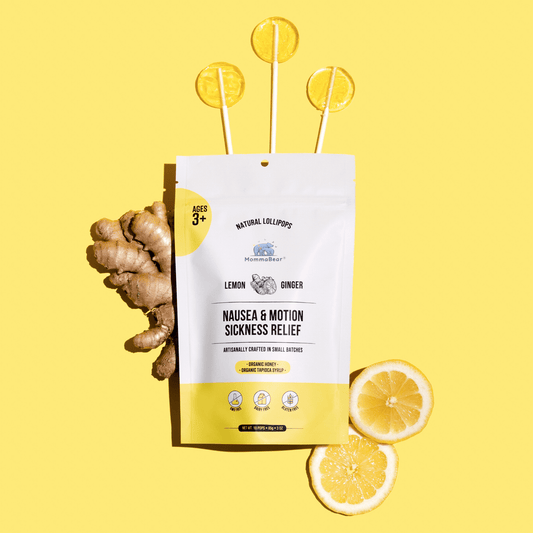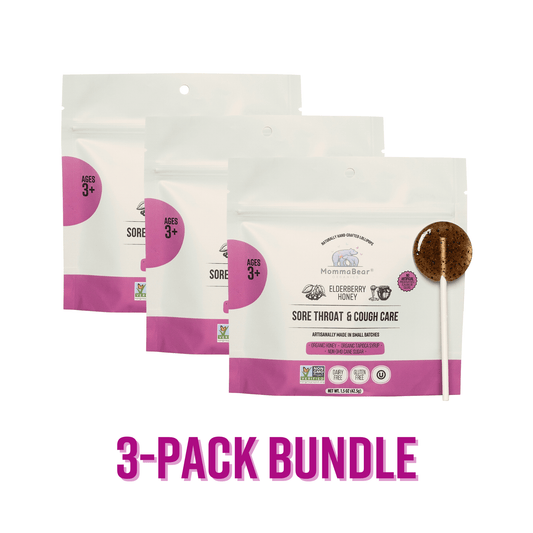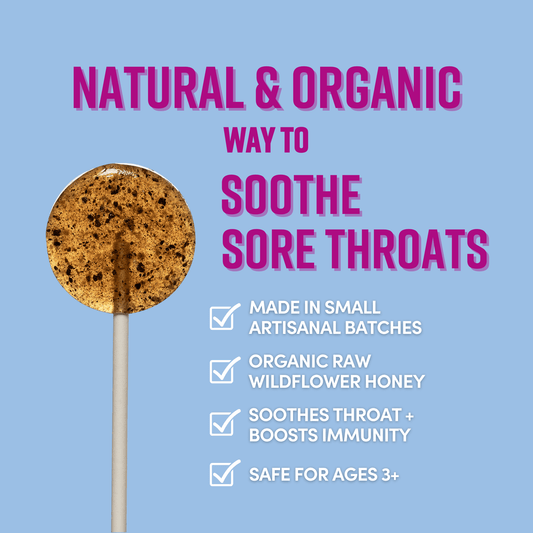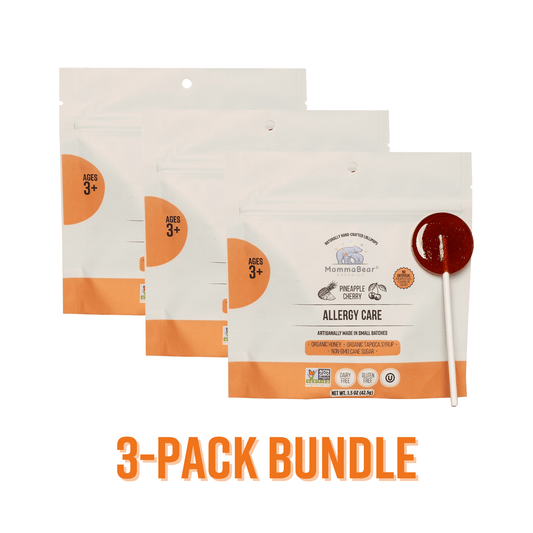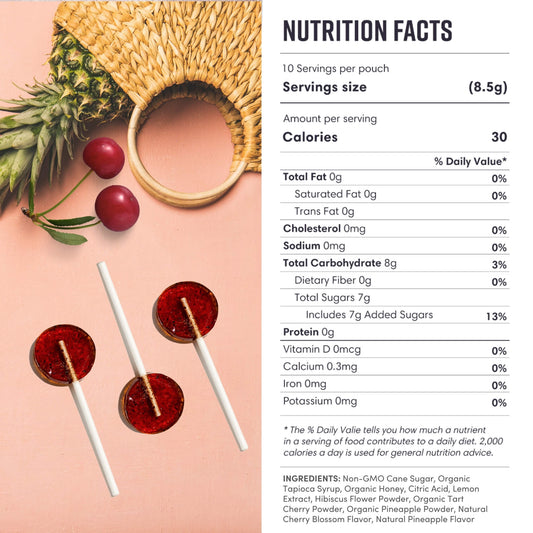I feel like everyone is talking about turmeric and ginger lately. For a while, I just nodded along, but then I started really looking into them for my own family. And wow. Turns out this isn't just hype; these two are the real deal for fighting inflammation and just helping you feel better all around. I was reading that the stuff inside them—curcumin from turmeric and gingerol from ginger—are like a little team that goes after inflammation and stress in your body. It seems like they can help with everything from achy joints to tummy troubles and even keeping your heart healthy.
Here’s kind of the cheat sheet I've put together for myself:
-
Turmeric: It's got this thing called curcumin. That's what does the heavy lifting for inflammation and joints. I also read it might even help with your mood. The trick is, your body needs a little help absorbing it, so having it with black pepper or some healthy fat is the way to go.
-
Ginger: This one has gingerol. It's amazing for digestion—I've always known that—but it's also great for pain, like from arthritis or just sore muscles after you overdo it.
-
Combination Benefits: This is the part that really got me. When you put them together, they actually work better. I saw something about a 5:2 ginger-to-turmeric ratio being the sweet spot. It just supercharges their effects.
Just a few ideas I've been trying:
-
I've been sneaking turmeric and ginger into everything—soups, my morning tea, smoothies. It’s pretty easy.
-
I'm a little wary of supplements, just because it feels like a lot at once. I think it’s probably smart to talk to a doctor before going that route, especially if you’re already taking other things.
So yeah, it feels like a simple, totally natural way to look after yourself. I’m making a real effort to find good, organic sources because I figure if you’re going to do it, you might as well get the best stuff, you know?
Can Ginger and Turmeric Really Reduce Pain? Here’s What Science Says!
How Turmeric and Ginger Reduce Inflammation
Okay, so to really get how turmeric and ginger work their magic, we have to look at the active little compounds inside them. I’ve been trying to wrap my head around the science, and it’s pretty fascinating.
First, there's curcumin, which is the big deal in turmeric. It’s what gives it that crazy bright yellow color, but it’s also a powerhouse antioxidant. I was reading what this one nutritionist, Mary-Eve Brown, said about it. She explained that, like a lot of colorful plants, turmeric is packed with things that protect our bodies from all the junk we run into every day, like pollution and sun damage, by neutralizing free radicals and keeping our cells safe.
When you get down to the nitty-gritty, the science gets a little dense—lots of acronyms like NF-κB and JAK/STAT that honestly go over my head. But the takeaway I got is that curcumin basically tells your body’s inflammation system to take a chill pill. There was this one trial I read about where people took curcumin every day and their inflammation markers, these things called CRP and TNF, went down. So, it’s not just talk.
Then you have ginger, which is packed with its own set of compounds, mostly gingerol and shogaol. These guys also do a number on inflammation. It seems like they help your body handle blood sugar better and can even stop fat from building up in cells, which is pretty neat.
But here’s the coolest part: they work better together. I found this study from 2022 that said a 5:2 mix of ginger to turmeric was the most effective combo for shutting down all these things in your body that cause inflammation. The science behind it showed that the two of them together were way more powerful than either one by itself. It’s all about synergy, you know? The main players seem to be curcumin and a few different types of shogaol from the ginger. This combo also fired up the body's own antioxidant defenses like crazy. It makes so much sense that these two have been used together in traditional medicine for ages. It's kind of amazing to see science catching up to old wisdom and influencing how things, like the lollipops we make at MommaBear Organics, are formulated today.
1. Turmeric
Mechanisms of Action
So, turmeric's power comes from curcumin, which is only a tiny part of the root, like 1 to 6 percent. It feels like it’s doing a million things at once inside your body. It hunts down those nasty free radicals and keeps your body’s inflammation response in check. It’s basically helping your body protect itself from the inside out. People are still studying exactly how it pulls all this off.
Health Benefits
I’ve seen articles comparing curcumin to things like ibuprofen for pain and inflammation, which is wild. People with osteoarthritis in some studies said they felt a real difference. And it’s not just for joints. It seems to be good for your heart, too, by calming down inflammation in your blood vessels. There’s even some early chatter about it helping with mood because it might affect neurotransmitters in your brain. Some studies are even looking into whether it can help with tumors, but that’s still very new and needs more research.
Effectiveness and Safety
The FDA says turmeric is "generally recognized as safe," which is reassuring. Sprinkling it on your food or drinking it in tea is pretty much risk-free for most of us. The funny thing is, your body has a hard time actually absorbing the good stuff (curcumin) on its own. I learned you have to pair it with black pepper—the piperine in pepper boosts absorption by a crazy amount, something like 2,000%! Eating it with a meal that has some fat in it helps too.
You can have a decent amount of turmeric powder daily without any issues. But if you're taking super high doses in supplements, you might get an upset stomach or feel dizzy. And if you have gallbladder problems or are on blood thinners, you should probably talk to a doctor first. But for the most part, it’s super easy to add to your diet and is safe for almost everyone.
Practical Applications
I really liked what Mary-Eve Brown from Johns Hopkins said: "Anyone who's trying to manage inflammation could benefit from adding some turmeric to their foods." It's just so easy to use. I throw it in curries, make golden milk, and even add it to smoothies. And I always remember to add a bit of black pepper. She also made a good point that getting it from the whole food is probably better than just taking a pill. If you are thinking about supplements, though, it’s always a good idea to check with a doctor, especially if you have other health stuff going on. And, like I was saying, pairing it with ginger just takes it to the next level.
2. Ginger
Mechanisms of Action
Ginger is just amazing. It has over 400 different active compounds in it, but the most famous one is 6-gingerol. These compounds work by blocking the things in your body that create inflammation in the first place. It’s kind of like turning off the inflammation switch. Plus, it’s a great antioxidant, so it helps clean up the damage from oxidative stress. All of this together is why ginger has so many different health benefits.
Health Benefits
I read that taking about 1.5 grams of ginger a day can really lower inflammation markers in your body. In one study with people who had knee osteoarthritis, a bunch of them felt their pain get better with ginger. And what’s great is that, unlike NSAIDs, it doesn’t seem to mess with your stomach.
It's also a lifesaver for sore muscles after a workout. And for menstrual pain, I saw that taking ginger powder for a few days can make a huge difference. It might even be good for your heart; some people saw their bad cholesterol drop after eating ginger every day for a few months. It all comes down to these natural things in ginger called salicylates, which your body turns into salicylic acid to fight pain and inflammation.
Effectiveness and Safety
Ginger is usually fine for most people. For arthritis, the doses are pretty small, and you shouldn't take more than 4,000 mg a day. I saw a couple of studies on people with rheumatoid arthritis where taking about 1,200 to 1,500 mg of ginger a day really helped calm down their pro-inflammatory genes and markers. That's pretty powerful stuff. But you do need to be a little careful. If you have diabetes, are on blood thinners, or are pregnant, it's definitely best to chat with a doctor before taking a lot of ginger.
Practical Applications
I love this quote from Hopkins Medicine: "Gingerol, a natural component of ginger root, benefits gastrointestinal motility ― the rate at which food exits the stomach and continues along the digestive process. Eating ginger encourages efficient digestion, so food doesn't linger as long in the gut." That just makes so much sense to me.
To get the benefits, you can just use fresh ginger, make tea, or even eat the pickled kind. If you do go for supplements, try to find good quality ones. It's always a good idea to start small and see how you feel. And of course, putting it with turmeric just makes both of them work even better.
3. Turmeric and Ginger Together
Mechanisms of Action
This is where it gets really interesting. When you put turmeric and ginger together, they become this amazing team. The ginger actually helps protect the curcumin in turmeric from breaking down, so it can stick around and do its job longer. It’s like they have each other’s backs. I read that a 5:2 ratio of ginger to turmeric can slash inflammatory markers by 40-60%. Together, they also fire up one of your body’s main defense systems against stress and inflammation. It's just a beautiful partnership.
Health Benefits
By teaming up, turmeric and ginger are just better at easing things like arthritis and digestive problems. Their combined antioxidant power gives your cells extra protection. I saw this one study from 2020 where people with knee osteoarthritis took a supplement with turmeric, black pepper, and ginger, and it really helped reduce a compound that causes inflammation in arthritis. On top of helping with joints, this duo is great for your immune system and your heart—helping with cholesterol, blood pressure, and circulation.
Effectiveness and Safety
For most adults, turmeric and ginger are totally safe. You just have to be mindful if you start taking them in high-dose supplements. There are some daily limits to keep in mind, and it's good to know that both of them can affect things like blood clotting and blood sugar. So if you're on medication for that, just be careful. And if you're pregnant or breastfeeding, it's always best to talk to a doctor first.
Here’s a little table I find helpful:
| Supplement | Safe Daily Dosage | Duration |
|---|---|---|
| Turmeric | 500–8,000 mg | Varies |
| Turmeric Extract | 1,500 mg | Up to 3 months |
| Ginger | 0.5–3 grams | Up to 12 weeks |
Taking way too much can cause an upset stomach or heartburn. And if you ever notice weird symptoms like dark urine or your skin looking yellow, you should stop taking them and see a doctor right away, because that could be a sign of liver issues.
Practical Applications
Bringing turmeric and ginger into your life is actually pretty fun. The supplement world can be a little bit like the wild west, so if you go that route, look for brands that are tested by a third party. And remember that most turmeric supplements don't have a ton of the active curcumin, so sometimes you need to take it a few times a day and always with black pepper.
Or you can just cook with them! I add the fresh or ground spices to everything—smoothies, teas, curries, and my favorite, golden milk. It’s so easy. Just start small and see what feels good for your body.
Benefits and Drawbacks
Thinking about all the good and not-so-good things with turmeric and ginger helps me make smarter choices for my family. Each one is great on its own, but there are a few things to keep in mind.
Individual Benefits
Turmeric is famous for being anti-inflammatory because of its curcumin. I like how this dietitian, Krista Kohls, put it: "Curcumin, a substance in turmeric, may help reduce inflammation in the body, so it's been sold widely as a supplement... It's also been touted as an antioxidant." It seems to help with things like high cholesterol and osteoarthritis, too.
Ginger, on the other hand, is my go-to for anything tummy-related. It's just incredible for nausea and bloating, all thanks to gingerol. And it fights inflammation without being harsh on your stomach like some other things can be.
Safety Considerations and Drawbacks
Using the spices in your kitchen is one thing, but the high-dose supplements are another story. They have way more curcumin than you'd ever get from food, which can be risky, especially if you're pregnant or breastfeeding.
If you take too much, you might get a stomachache or heartburn. And since both spices can affect blood clotting and blood sugar, you have to be mindful if you're taking medicine for those things. The quality of what you buy matters, too. I've heard that some cheap turmeric powders have fillers like wheat starch, which is a big problem if you can't have gluten. And curcumin supplements can mess with a whole bunch of medications.
There are even some rare, scary risks. I read about a man who got kidney problems from taking a lot of turmeric every day. It just goes to show you really need to be careful. As Amber J. Tresca says, it's important to talk to your doctor about this stuff, especially if you have a health condition.
Combined Benefits and Enhanced Effectiveness
When you use them together, it's like they amplify each other's powers. That 2022 study I mentioned found that a 5:2 ginger-to-turmeric ratio was the magic formula for fighting inflammation.
And they help each other with absorption. We already know black pepper helps curcumin, but it seems like ginger gives it a boost, too. It means you can get more of the good stuff working in your body.
Here's a simple way I think about it:
| Factor | Turmeric | Ginger | Combined | |
|---|---|---|---|---|
| Primary Strength |
Fights inflammation |
Soothes the stomach | Supercharges inflammation fighting | |
| Active Compound | Curcumin | Gingerol | Both working together | |
| Safety Profile | Generally safe, watch blood thinning | Generally safe, stick to 4g daily |
|
|
| Absorption |
Needs help |
Absorbs well | They help each other | |
| Best For | Arthritis, cholesterol | Tummy issues, nausea | Overall inflammation support | |
| Ease of Use | Need to think about absorption | Super Easy to use | Needs a little planning |
So, while they're great on their own, using them together just seems to give you more bang for your buck. It might take a little more thought, especially with supplements, but it feels worth it.
Conclusion
So, turmeric and ginger. What a pair. It really feels like they're so much more powerful when they're together, especially when it comes to inflammation. I keep thinking about that 5:2 ginger-to-turmeric ratio and how it can really knock down those inflammatory markers. It’s not just about inflammation, though. It’s about helping your immune system, your digestion, just everything. And it makes me think about how important it is to use good, quality ingredients.
You know, quality really does matter. When you get organic, non-GMO spices, you’re getting more of the good stuff like curcumin and shogaols, without worrying about any nasty extras. That's a huge part of why we do what we do at MommaBear Organics—our lollipops are our little way of making it easy for families to get these benefits in a simple, tasty treat.
It feels like more and more people are looking for natural ways to stay healthy, and that makes me so happy. Whether you're cooking with these spices, trying supplements, or finding products that use them, just being consistent and thoughtful about where they come from is key.
I guess what I’m left with is that turmeric and ginger aren't some magic cure. They’re just a piece of the puzzle. They work best when you’re already trying to live a healthy life. But what a powerful piece they are. It's always a good idea to check in with a doctor before you start anything new, just to make sure it's the right move for you. It’s all a learning process, isn’t it?
FAQs
What are easy ways to include turmeric and ginger in my diet to support inflammation relief?
Honestly, getting more turmeric and ginger into your meals is simpler than it sounds, and it makes everything taste better! I've started sprinkling turmeric on my scrambled eggs, stirring it into soups, or mixing it into rice. It adds such a nice color. And making golden milk is my favorite—just turmeric, warm milk (I use oat milk), a bit of honey, and that all-important pinch of black pepper.
For ginger, it's so versatile. I grate it into stir-fries, blend it into my smoothies for a little bit of a kick, or even mix it into salad dressings. If you want something really quick, you can brew a simple tea with both of them or even make a little wellness shot. I find that just making it a regular habit is the best way to get all those good anti-inflammatory benefits.
What are the possible side effects of taking too much turmeric and ginger, and how can you avoid them?
Yeah, it's definitely possible to have too much of a good thing. If you go overboard with turmeric or ginger, you might end up with an upset stomach—like nausea or heartburn. Some people can even have allergic reactions, like a skin rash. In really serious cases, taking way too much could cause issues with your kidneys or gallbladder, or interfere with blood-thinning medications.
To be safe, I just try to stick to normal amounts, especially in food. If you're using supplements, follow the directions and maybe chat with a doctor first, particularly if you have any health issues or take other medicines. The most important thing is just to listen to your body. If something feels off, it probably is.
What makes the 5:2 ratio of ginger to turmeric effective for reducing inflammation, and how can you use it in daily life?
That 5:2 ratio is so interesting! From what I've read, it seems to be the perfect balance where the two spices really complement each other to lower the key things in our bodies that cause inflammation, like nitric oxide and interleukin 6. It’s all about teamwork.
Using it in real life is pretty easy. If you're cooking or making a tea, you can just think in parts—like 5 teaspoons of ginger to 2 teaspoons of turmeric. It’s just a simple, natural way to help manage inflammation and feel your best, which is exactly the kind of thing we believe in at MommaBear Organics.
Related posts
- 10 Anti-Inflammatory Foods for Muscle Recovery
- Top TCM Ingredients for Immune Tea
- Raw Honey vs. Herbal Teas for Sore Throats
- Study: Benefits of Organic Remedies for Allergies



